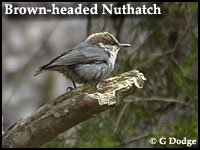Look up! I see Chimney Swifts hawking insects above the Explore the Wild/Catch the Wind loop every day. The number of swifts will no doubt increase as more young of the year leave their nests and join in on these foraging flights. If you’re not familiar with Chimney Swifts, they’re the small, acrobatic, black birds swiftly flying overhead, often in small family groups. At times, it appears that they flap their narrow, stiff wings alternately while flying, one wing, then the other. Of course, they don’t flap their wings independently but this apparent irregular wing flapping is one way to help identify them – to distinguish them from other little dark birds flying overhead.
The Museum’s four recently fledged Cooper’s Hawks were busy the last few days of this period. I saw one of the youngsters soaring over the Wetlands and heard and saw the others perched in the pines across from the Lemur House. One was calling from the Willows behind the Wetlands Overlook. They’re experimenting with their flying and hunting skills and becoming more independent everyday, although still begging for food from their parents. One of the hawks unsuccessfully took a swipe at the birds in the Bird Feeder area. The hawk’s lack of hunting prowess was apparent as it flew in, this direction and that, unable to decide which Cardinal or Goldfinch to focus on as it swooped through the feeders. I did happen to see one of the adults carry in prey to one of the young hawks, so the birds are still relying on their parents for the basics.
 If you’ve ever stopped by the Bird Feeder area in Catch the Wind you may have noticed a small, rather nondescript little bird with a gray back and brown cap at one of the suet feeders. You may have even heard its “Rubber Duck” squeaky-toy calls as you strolled around through the pines on the Explore the Wild/Catch the Wind Loop. Brown-headed Nuthatches regularly visit the bird feeders. They’re not often found far from pine trees. Brown-headed Nuthatches are one of two species of Nuthatches at the Museum during the summer months (the other is the larger White-breasted Nuthatch). The Bird Feeder Exhibit is a good place to see them.
If you’ve ever stopped by the Bird Feeder area in Catch the Wind you may have noticed a small, rather nondescript little bird with a gray back and brown cap at one of the suet feeders. You may have even heard its “Rubber Duck” squeaky-toy calls as you strolled around through the pines on the Explore the Wild/Catch the Wind Loop. Brown-headed Nuthatches regularly visit the bird feeders. They’re not often found far from pine trees. Brown-headed Nuthatches are one of two species of Nuthatches at the Museum during the summer months (the other is the larger White-breasted Nuthatch). The Bird Feeder Exhibit is a good place to see them.